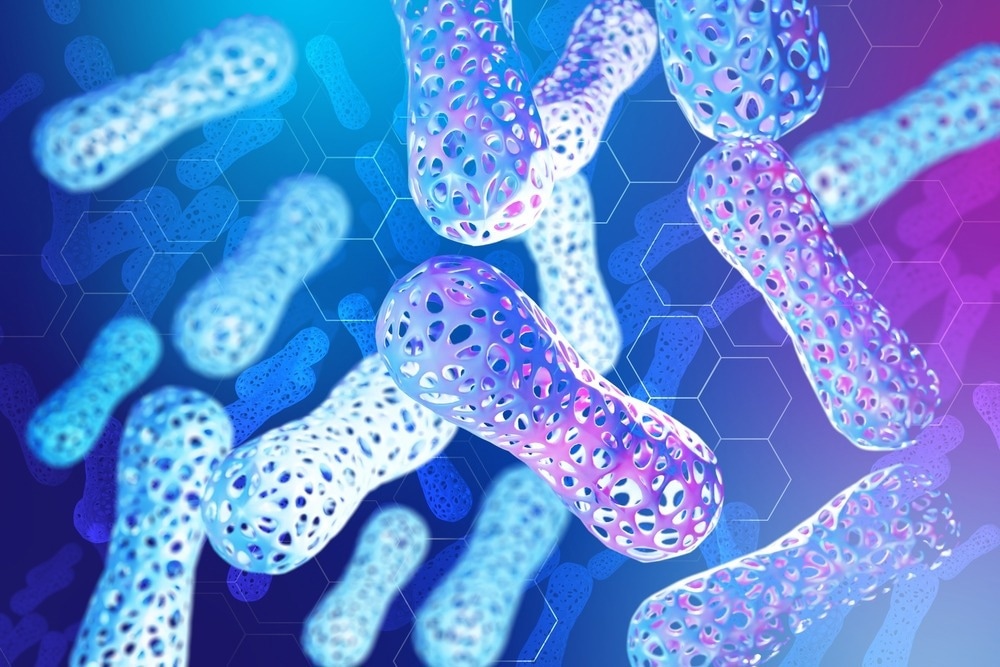 By Surbhi JainReviewed by Susha Cheriyedath, M.Sc.Sep 22 2022
By Surbhi JainReviewed by Susha Cheriyedath, M.Sc.Sep 22 2022In an article recently published in the journal Food Hydrocolloids for Health, researchers discussed an efficient and reliable way to make capsules that carry probiotic bacteria using 3D bioprinting.

Study: An easy and robust method of preparation of capsules for delivering probiotic bacteria by 3D bioprinting. Image Credit: FOTOGRIN/Shutterstock.com
Background
Numerous studies have demonstrated that changes in the microbiota can cause autoimmune pathologies, allergies, inflammatory disorders, and diseases including obesity and diabetes, among others. Consuming probiotic bacteria is therefore crucial for maintaining a healthy and functional microbiota environment, and the probiotic bacteria's metabolic activity is what makes the normal gastrointestinal microbiota better.
One of the most popular and well clinically studied probiotic bacteria is Lactobacillus rhamnosus GG (LGG), which has been shown to have immune-modulating and gastrointestinal health advantages. A significant part of bacteria cannot endure the challenging conditions of the upper gastrointestinal system. The environment of the gastrointestinal tract, which prevents LGG from reaching the intestine surface and acting as a recovery agent, thus restricts the probiotic activity's effectiveness.
In this regard, numerous strategies for encasing microorganisms have been developed in food industries. The vitality of probiotics is one of the main problems with their formulation since it decreases after processing or during storage. To protect the bacteria during processing steps, numerous technologies have been developed to encapsulate bacterial cells. An approach that is frequently employed and used in many different research fields is bioprinting using mammalian cells and hydrogel. However, there are very few reports of printing bacterial cells in three dimensions. While 3D bioprinting of bacterial cells has been documented in some cases, 3D bioprinting techniques have never been used to preserve the health-promoting properties of bacteria.
About the Study
In this study, the authors discussed a cutting-edge microextrusion method for the 3D bioprinting of probiotic bacterial capsules. Encapsulated LGG bacteria were printed that were stable for 7 days using a mixture of gelatin gel, sodium alginate, and LGG as bioink. The proposed technique of creating the microorganisms in capsules was quick and easy. Within 30 minutes, 120 probiotic capsules with 108 CFU/ml were printed. The encapsulated LGG bacteria were uniformly dispersed throughout the alginate-gelatin hydrogel upon microscopic analysis of the LGG capsules. The bacteria in the capsules withstood the challenging gastrointestinal fluid environment in vitro and remained viable and alive for 7 days at 4 °C.
The team employed a thorough encapsulation process employing a 3D bioprinting technology to address the inconsistency and ineffectiveness of the current encapsulation technologies for the particular targeting of probiotic bacteria to the small intestine by oral administration. A straightforward method for the 3D bioprinting of micro-extrusion to encapsulate probiotic bacteria for oral administration was devised. This study used a 3D bioprinter to create capsules containing the probiotic bacterium Lactobacillus rhamnosus GG.
The researchers used standard microbiology techniques, scanning electron microscopy (SEM), confocal microscopy, infrared spectroscopy, and atomic force microscopy (AFM) to analyze the characteristics of the LGG capsules. For LGG capsules that were 0, 2, and 7 days old, the development and viability of the matrix-encapsulated probiotics were observed in agreement with the minimal amount. To observe how LGG capsules behaved once they reached the intestinal target, they were eventually exposed to digestive fluids in an in vitro digestion system.
Observations
After passing through the mimic fluids of the gastrointestinal tract, the log CFU/mL for LGG capsules was 8.1 as compared to 7.9 in the absence of the in-vitro digesting stage. After passing through the gastrointestinal fluids, the log CFU/mL for the non-encapsulated capsules containing the probiotic bacteria and the free bacteria was 7.5 and 7.4, respectively. The log CFU/mL was 9.3 and 9.1 in the absence of gastrointestinal fluids, which indicated a 30-fold reduction. After the WST 1 reagent was added on days 0, 2, and 7 for LGG capsules, it was discovered that the absorbance at 460 nm was enhanced by 2.7, 2.8, and 3.3-fold in comparison to that of the sole medium, respectively.
After loading with LGG bacteria, the gel's rigidity marginally increased from 3.1 to 3.6 kPa. A mechanical breakdown was seen after 7 days, as evidenced by a drop in pressure from 3.6 to 1.1 kPa. Black features emerged after the bacteria were absorbed into the polymer matrix, which indicated that the LGG cells were evenly distributed throughout the 3D-bioprinted film. The capsules maintained their stability at 4°, 23°, and 37 °C. The capsules were also stable in water and PBS, but when sodium citrate was added, they quickly disintegrated at 37 °C for 30 minutes.
Conclusions
In conclusion, this study used a 3D bioprinter and sodium alginate-gelatin as an encapsulating medium to devise a novel method of encapsulating probiotic bacteria. Within 30 minutes, 120 LGG capsules were produced, each carrying 8 log CFU/mL of LGG. The gelatin alginate matrix of the LGG capsules included evenly distributed microorganisms. The LGG inside the capsules was functional. The probiotic bacteria within the capsule withstood the demanding gastrointestinal fluidic environment created in an in vitro digestion setup.
The authors mentioned that the proposed bioprinting technique would make it possible to quickly and simply create encapsulated bacteria, which would significantly alter the food sectors. They also stated that this bioprinting technique for encapsulating probiotic bacteria for their precise delivery in the stomach could prove to be a game-changing approach for commercial use.
More from AZoM: What is the Function of Isotopic Analysis?
References
Mallick, A., Quiles, F., Francius, G., et al. An easy and robust method of preparation of capsules for delivering probiotic bacteria by a 3D bioprinting. Food Hydrocolloids for Health, 100088 (2022). https://www.sciencedirect.com/science/article/pii/S2667025922000358.
Disclaimer: The views expressed here are those of the author expressed in their private capacity and do not necessarily represent the views of AZoM.com Limited T/A AZoNetwork the owner and operator of this website. This disclaimer forms part of the Terms and conditions of use of this website.